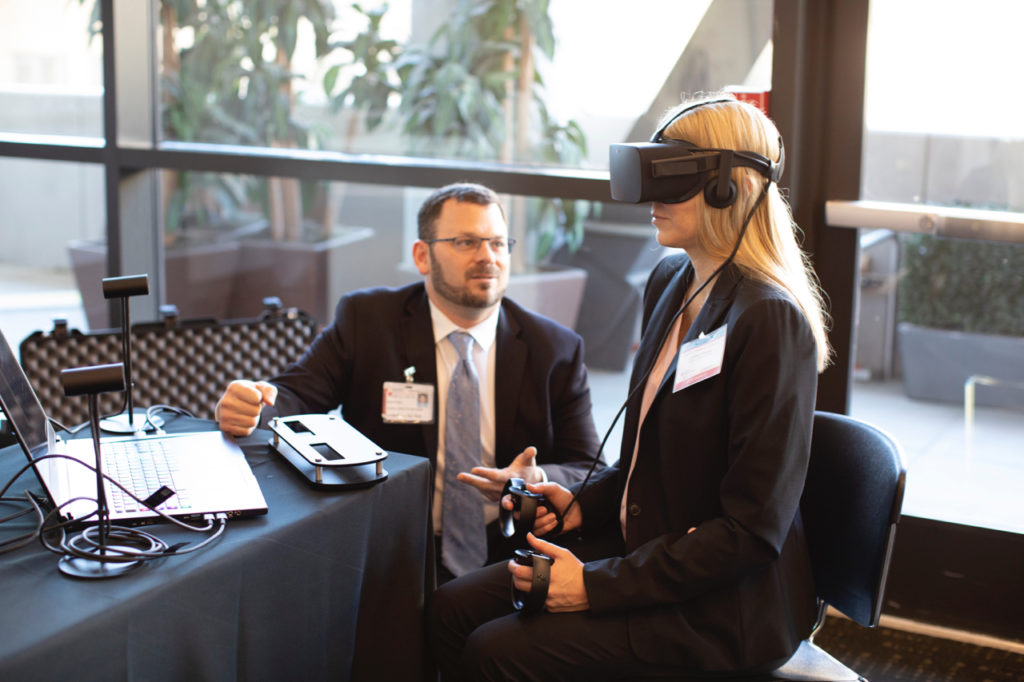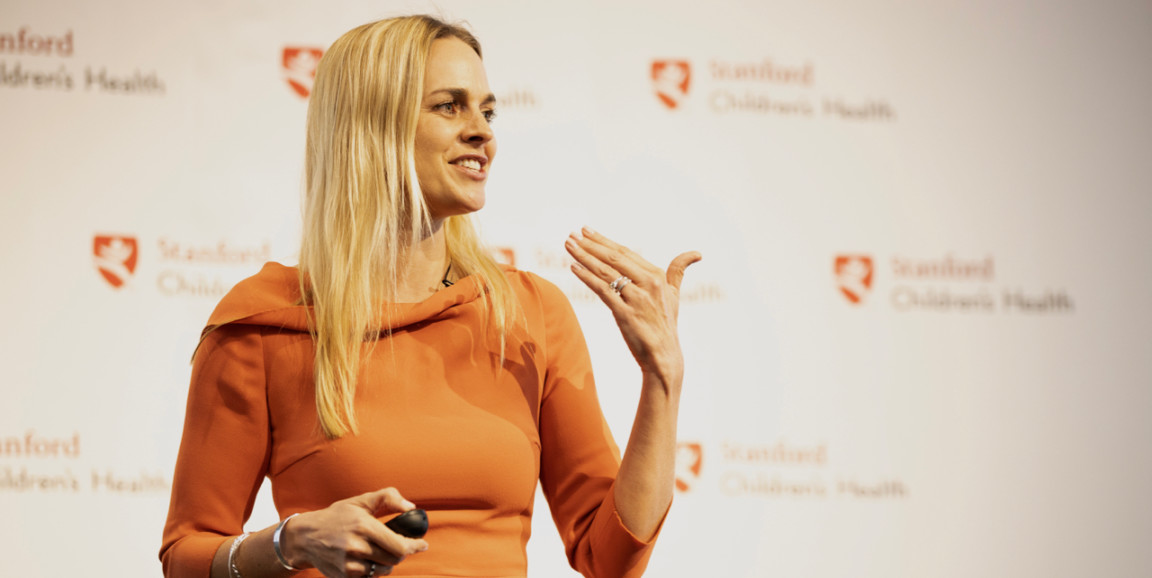Scientists, innovators, venture capitalists and medical industry experts gathered at Stanford last week for the second annual Stanford Children's Health Pediatric Innovation Showcase, a daylong event highlighting new devices and developments in pediatric medicine.
The conference covered wide ground, including engaging patients with social media, better hospital design, commercialization of scientific innovations, the promises of gene therapy, and several medical uses of virtual reality. Capping the day, pediatric health innovators vied for funding in a pitch competition hosted by the UCSF-Stanford Pediatric Device Consortium. Of 80 entries, 13 finalists described the medical devices they are developing for babies and kids.
Lloyd Minor, MD, dean of the School of Medicine, welcomed participants by highlighting Stanford's culture of collaboration. For example, nearly a third of Stanford engineering faculty are currently conducting research with medical applications, he said. "It's because that's where the really interesting problems are today," Minor said.
At the same time, innovation in pediatric medical devices lags behind those for adults, he noted. "The consortium's mission to ensure that the latest technologies are available to all -- in this case our youngest patients -- mirrors that of Stanford Medicine's precision health vision."
Paul King, president and CEO of Stanford Children's Health, offered uplifting opening remarks. "Pediatric medicine at its core is about optimism -- it's about the future."
Social media and other online tools have great power to provide parents with evidence-based information about pediatrics, keynote speaker Wendy Sue Swanson, MD, told the audience. Swanson, chief medical officer of Before Brands and chief of digital innovation at Seattle Children's Hospital, writes a pediatrics-focused blog, Seattle Mama Doc, and uses many other channels to reach out to parents.
"Communication may be your most important technology," Swanson told the audience. "Are you making information online to contribute to something better?"

Pediatric cardiologist Loren Sacks shares a virtual reality project. 
Paul King, president and CEO of Stanford Children's Health, speaks with attendees. 
Laura Wassermann, from Packard's child life team, left, with Hadley Stevick, right, a 16-year-old patient, and her mother, Amy Stevick, with projects from Packard's makerspace.
Swanson shared several stories from her work. Her most popular blog post, Toddler Sleep: 4 reasons toddlers wake up at night, covers a topic from the bread and butter of well-child pediatrician visits. Why was it so widely read?
Swanson said she found an answer in data on her readers' engagement with the post. When it was midnight in Seattle, views were peaking there; when it was midnight in Singapore or India, that was where readership was highest. Parents want just-in-time information, and pediatricians need to help ensure that what parents find online is medically accurate, Swanson said.
Similarly, doctors need to make sure that families can get scientifically accurate information about subjects like vaccines, no matter when or where they look for it. Recently, Swanson has worked with Seattle Children's to build a tool called Flu Doctor that answers basic questions about flu vaccines via Alexa. Swanson wants more doctors to join such efforts to counteract anti-vaccine propaganda and anecdotes that proliferate online.
"If you don't do it, someone's going to confuse your expertise with someone else's experience," she said.
At the end of a day, teams vied for about $300,000 during a pitch competition. The three platinum awards were given to:
- Bionic Tot, for its Button Huggie, a device for children with gastronomy tubes, which helps prevent infections, leaking and skin breakdown at the tube's external site.
- Gravitas Medical, for its sensor-enabled nasogastric feeding tubes. The sensors guide placement of the tubes and warn caregivers if tubes end up in the esophagus or lung instead of the stomach.
- Palmm, for its bio-electronic glove that provides low levels of electrical stimulation to stop excessive sweating in patients' hands.
The event was also sponsored by Stanford's Maternal & Child Health Research Institute.
Photos courtesy of Stanford Children's Health




